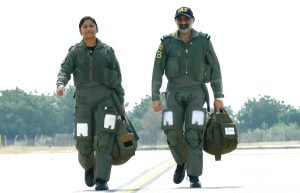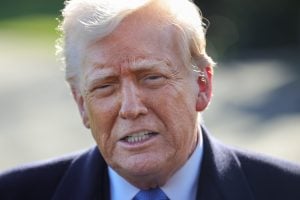Embarking on a journey to become a fighter pilot in the Indian Air Force (IAF) is a dream for many aviation enthusiasts. It is a path filled with challenges, rigorous training, and immense pride. The role of a fighter pilot is not only about flying advanced aircraft but also about serving the nation with valor and dedication.
This comprehensive guide outlines the essential steps and requirements to help you navigate this exciting career path.
The Essence of a Fighter Pilot
A fighter pilot is an elite aviator responsible for operating high-performance aircraft designed for air-to-air combat, ground attack, and reconnaissance missions. Their primary duties include:
- Defending National Airspace: Engaging in aerial combat to protect the nation’s sovereignty.
- Conducting Reconnaissance Missions: Gathering intelligence through aerial surveillance.
- Executing Ground Attacks: Supporting ground forces with precision airstrikes.
The Importance of Fighter Pilots in the IAF
Fighter pilots are the backbone of the Indian Air Force, playing a crucial role in maintaining air superiority and ensuring national security. Their training equips them with skills to handle high-pressure situations, make quick decisions, and work as part of a cohesive team.
Also Read | How to Join Indian Air Force as an Aeronautical Engineer
Educational Qualifications
Academic Requirements
To pursue a career as a fighter pilot, candidates must first meet specific educational qualifications:
- Completion of 10+2: Candidates should have completed their higher secondary education with Physics and Mathematics as core subjects.
- Minimum Percentage: Achieving a minimum percentage in these subjects is vital for eligibility in the IAF’s flying branch.
Higher Education Options
While not mandatory, pursuing a degree can enhance your prospects:
- Engineering Degrees: Candidates with a Bachelor of Engineering (BE) or Bachelor of Technology (B.Tech) are highly regarded.
- Graduates from Other Disciplines: Graduates from various fields can also apply, provided they meet other eligibility criteria.
Pathways to Join the Indian Air Force
National Defence Academy (NDA)
For those who have completed their 10+2 education, the NDA serves as an excellent entry point into the IAF:
- Eligibility: Male candidates aged between 16.5 to 19.5 years can apply.
- Entrance Exam: Conducted by the Union Public Service Commission (UPSC) twice a year, it includes a written test followed by an SSB interview.
Combined Defence Services (CDS) Exam
Graduates looking to join the flying branch can opt for the CDS exam:
- Eligibility: Candidates must be graduates from recognized universities.
- Exam Structure: Like the NDA, the CDS exam also involves a written test followed by an SSB interview.
Air Force Common Admission Test (AFCAT)
The AFCAT is another pathway for aspiring pilots:
- Eligibility: Open to graduates in any discipline, including engineering.
- Exam Details: Conducted biannually, it assesses candidates on various subjects, including General Awareness, Verbal Ability, and Numerical Ability.
NCC Special Entry
For those with a background in the National Cadet Corps (NCC):
- Eligibility: Candidates must possess the Air Wing Senior Division ‘C’ Certificate.
- Commission Types: Men can apply for Permanent Commission, while both men and women can apply for Short Service Commission.
The Selection Process
Services Selection Board (SSB) Interview
Once candidates clear the written examination, they must undergo the SSB interview:
- Assessment Format: The SSB evaluates candidates through various tests, including psychological assessments, group tasks, and personal interviews.
- Key Attributes: Leadership qualities, decision-making skills, and communication abilities are crucial for success.
Medical Examination
Passing the SSB interview leads to a comprehensive medical examination:
- Health Standards: Candidates must meet stringent medical criteria to ensure they are fit for flying duties.
- Physical Fitness: Maintaining good health and physical fitness is essential for aspiring pilots.
Pilot Aptitude Battery Test (PABT)
The PABT is a critical assessment for candidates aiming to fly:
- Purpose: This test evaluates the aptitude and skills necessary for flying.
- Components: It includes various tasks designed to assess spatial awareness, coordination, and decision-making abilities.
Training at the Air Force Academy
Initial Training
Selected candidates begin their journey at the Air Force Academy (AFA):
- Duration: The initial training typically lasts for about 18 months.
- Focus Areas: Candidates undergo basic military training, which includes physical fitness, drill, and weapon training.
Advanced Flying Training
Upon completion of initial training, candidates progress to advanced flying training:
- Aircraft Familiarization: Trainees learn to operate a variety of aircraft, including fighter jets.
- Combat Training: This phase focuses on aerial combat tactics, navigation, and mission planning.
Also Read | The Aircraft Used by Indian Air Force to Train its Pilots
Specializations in Fighter Pilot Training
Types of Fighter Aircraft
Fighter pilots may specialize in different types of aircraft:
- Multirole Fighters: These aircraft, such as the Sukhoi Su-30MKI, are capable of performing various missions.
- Interceptor Aircraft: Designed for air-to-air combat, these include aircraft like the MiG-21.
Advanced Combat Training
Once pilots are proficient in basic flying, they undergo advanced combat training:
- Tactics and Strategy: Pilots learn about aerial tactics, enemy engagement strategies, and mission execution.
- Simulation Exercises: Utilizing flight simulators, pilots practice complex scenarios to enhance their skills.
Life as a Fighter Pilot
Daily Responsibilities
A typical day for a fighter pilot involves:
- Pre-Flight Briefings: Pilots participate in briefings to discuss mission objectives, weather conditions, and flight plans.
- Flight Operations: Conducting training flights, participating in exercises, and engaging in combat drills.
Challenges Faced
The life of a fighter pilot is thrilling yet demanding:
- High-Pressure Situations: Pilots must make quick decisions in critical situations.
- Physical and Mental Strain: Maintaining peak physical condition and mental acuity is essential for success.
Career Progression
Opportunities for Advancement
Fighter pilots have various opportunities for career advancement:
- Command Positions: Experienced pilots can rise to command roles, overseeing operations and training.
- Specialized Roles: Pilots may also transition to specialized roles, such as test pilots or instructors.
Continuing Education and Training
The IAF emphasizes continuous learning and development:
- Advanced Courses: Pilots are encouraged to pursue advanced training and courses to enhance their skills.
- International Training: Opportunities for training with foreign air forces can provide valuable experience.
Also Read | 7 Most Important Indian Air Force Bases
Conclusion
Becoming a fighter pilot in the Indian Air Force is a challenging yet rewarding journey that demands dedication, resilience, and passion. By following the outlined steps, aspiring candidates can navigate their way to achieving this prestigious role, serving their nation with honor and pride.
FAQs
1. What are the age limits for joining the Indian Air Force as a pilot?
Candidates must be between 16.5 and 19.5 years for NDA, while for CDS and AFCAT, the age limit varies based on the specific notification.
2. Do I need a degree to become a fighter pilot?
While a degree is not mandatory for NDA aspirants, graduates are eligible for CDS and AFCAT, making higher education beneficial.
3. What physical standards must I meet to become a fighter pilot?
Candidates must meet specific medical and physical fitness standards set by the Indian Air Force to ensure they are fit for flying duties.
4. How long is the training period for fighter pilots?
The initial training at the Air Force Academy lasts around 18 months, followed by advanced flying training, which may take additional months.
5. Can women become fighter pilots in the Indian Air Force?
Yes, women are eligible to apply for flying branches through various entry schemes, including AFCAT and NCC Special Entry.






















